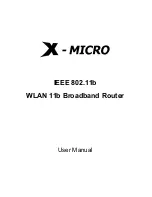
1-12
Figure 1-9
Position of Layer 2 multicast protocols
Source
Receiver
Receiver
IPv4/IPv6 multicast packets
IGMP Snooping
/MLD Snooping
Multicast VLAN
/IPv6 Multicast VLAN
1) IGMP Snooping/MLD Snooping
Running on Layer 2 devices, Internet Group Management Protocol Snooping (IGMP Snooping) and
Multicast Listener Discovery Snooping (MLD Snooping) are multicast constraining mechanisms that
manage and control multicast groups by listening to and analyzing IGMP or MLD messages exchanged
between the hosts and Layer 3 multicast devices, thus effectively controlling the flooding of multicast
data in a Layer 2 network.
2) Multicast
VLAN/IPv6 multicast VLAN
In the traditional multicast-on-demand mode, when users in different VLANs on a Layer 2 device need
multicast information, the upstream Layer 3 device needs to forward a separate copy of the multicast
data to each VLAN of the Layer 2 device. With the multicast VLAN or IPv6 multicast VLAN feature
enabled on the Layer 2 device, the Layer 3 multicast device needs to send only one copy of multicast to
the multicast VLAN or IPv6 multicast VLAN on the Layer 2 device. This avoids waste of network
bandwidth and extra burden on the Layer 3 device.
Multicast Packet Forwarding Mechanism
In a multicast model, a multicast source sends information to the host group identified by the multicast
group address in the destination address field of IP multicast packets. Therefore, to deliver multicast
packets to receivers located in different parts of the network, multicast routers on the forwarding path
usually need to forward multicast packets received on one incoming interface to multiple outgoing
interfaces. Compared with a unicast model, a multicast model is more complex in the following aspects.
z
To ensure multicast packet transmission in the network, unicast routing tables or multicast routing
tables (for example, the MBGP routing table) specially provided for multicast must be used as
guidance for multicast forwarding.
z
To process the same multicast information from different peers received on different interfaces of
the same device, every multicast packet is subject to a reverse path forwarding (RPF) check on the
incoming interface. The result of the RPF check determines whether the packet will be forwarded
or discarded. The RPF check mechanism is the basis for most multicast routing protocols to
implement multicast forwarding.
Содержание S5500-SI Series
Страница 161: ...3 10 GigabitEthernet1 0 1 2 MANUAL...
Страница 220: ...1 7 Clearing ARP entries from the ARP table may cause communication failures...
Страница 250: ...3 3 SwitchB system view SwitchB interface vlan interface 1 SwitchB Vlan interface1 ip address dhcp alloc...
Страница 310: ...i Table of Contents 1 Dual Stack Configuration 1 1 Dual Stack Overview 1 1 Configuring Dual Stack 1 1...
Страница 331: ...1 7 1 1 ms 1 ms 1 ms 1 1 6 1 2 1 ms 1 ms 1 ms 1 1 4 1 3 1 ms 1 ms 1 ms 1 1 2 2 Trace complete...
Страница 493: ...2 8...
Страница 1111: ...1 10 Installing patches Installation completed and patches will continue to run after reboot...
















































